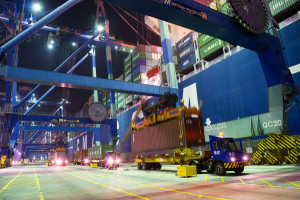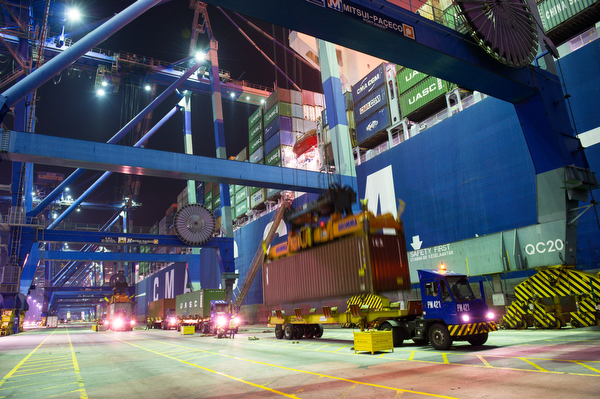 Westports Malaysia achieved “a strong set of financial results” in the first nine months of 2015 as profit and revenue grew, and the terminal set a new record in container volume in the third quarter, port operator Westports Holdings Berhad said.
Westports Malaysia achieved “a strong set of financial results” in the first nine months of 2015 as profit and revenue grew, and the terminal set a new record in container volume in the third quarter, port operator Westports Holdings Berhad said.
The company said Westports, one of the two terminals at Port Klang, Malaysia’s busiest port, achieved profit before taxation of MYR484 million (US$112 million) from January to September 2015, up by 11% from the same period the previous year.
Operational revenue also grew, expanding by 4% to MYR1.16 billion, as the group benefited from lower fuel costs and operational efficiency gains while handling an increase in container throughput.
Total container volume expanded by 9% to 6.71 million twenty-foot equivalent units (TEUs) in the period, with increased volume at both transshipment and gateway segments.
In the third quarter of the year, container throughput hit an all-time quarterly high of 2.29 million TEUs, supported by increased capacity at Container Terminal 7.
Westports also said that in the third quarter, its proposed container tariff hike had been approved by the authorities, and the first phase of the revision that entails an average increase of 15% was implemented on November 1 this year.
Ruben Emir Gnanalingam, chief executive officer of Westports, said the group managed to increase its earnings as “container throughput continued to show resilient growth,” with both transshipment and gateway-domestic throughput demonstrating improvements that had led to the milestone in the third quarter.
Looking ahead, Ruben added, “Westports have implemented the container tariff revision on 1st November 2015. This would further facilitate the Group’s ongoing expansion at Container Terminal 8 as the latter would be equipped with state-of-art ship-to-shore cranes, energy efficient container terminal handling equipment and new back-of-the-terminal facilities. All this will enable Westports to continue to be a pre-eminent regional transhipment hub as well as to accommodate the country’s growing trading requirements.”





